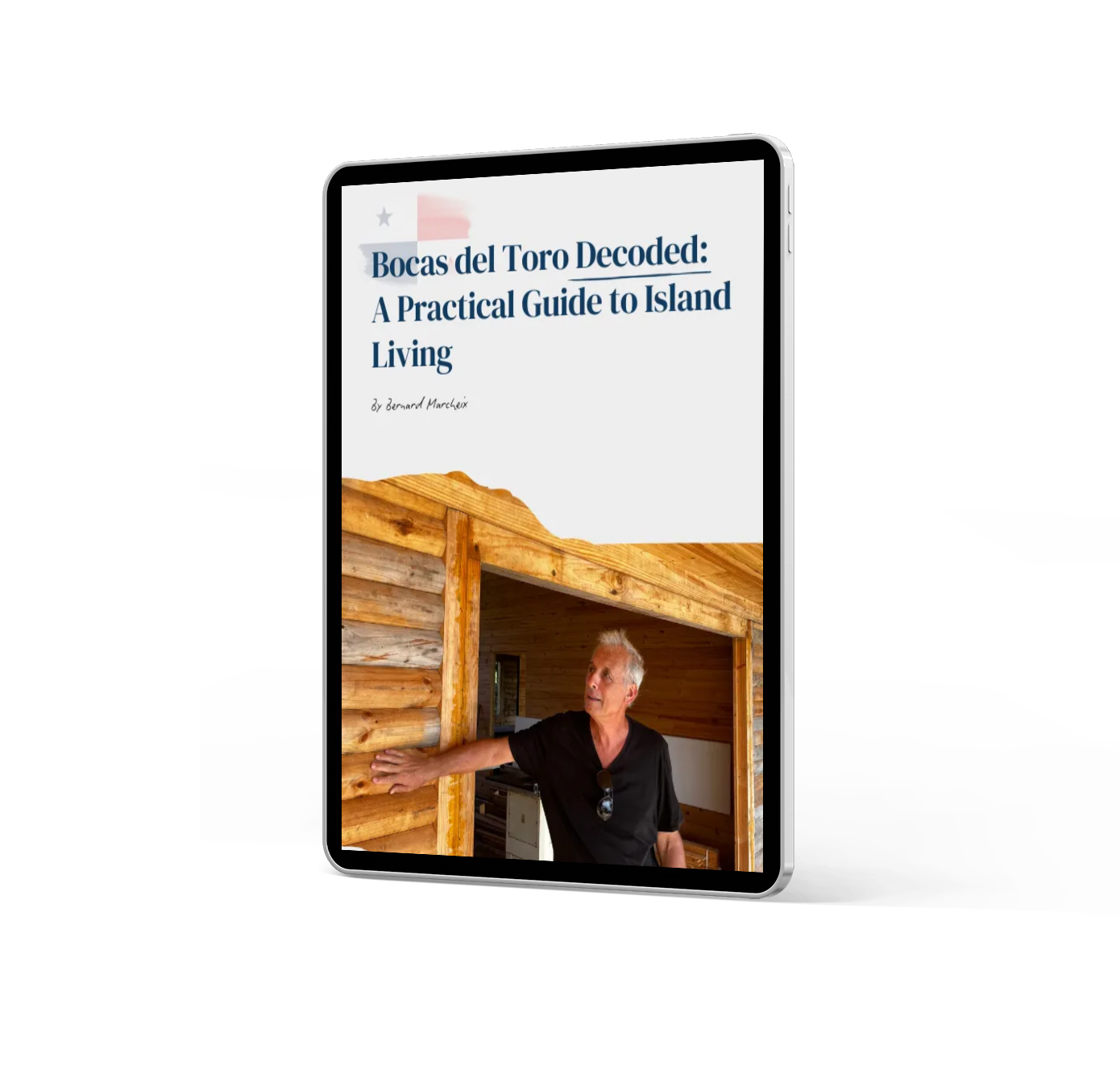Self-sufficiency starts with solar energy, but cloudy days in Bocas del Toro can challenge your system. Oversizing your solar array—producing 2–3 times your daily energy needs—keeps batteries charged and generators rarely used, saving money and reducing noise. Paired with rainwater harvesting, this eco-friendly approach ensures comfort, reliability, and sustainability in the lush tropics.
Solar energy and rainwater harvesting are undoubtedly the two main components of a self-sufficient lifestyle. It’s essential to approach these topics thoughtfully, so here are some key insights.
Solar Power
For those unfamiliar with how a solar system works, it primarily consists of solar panels that capture ultraviolet rays from the sun and convert them into electrical energy. This energy is then routed through a charge controller to regulate the flow based on the sunlight’s intensity. This device is crucial for efficiently managing the energy sent to the batteries, which store the electrical energy. The stored energy is converted from the battery voltage—typically 12, 24, or 48 volts—into 110 or 220 volts to power your home’s electrical system via an inverter.
It’s important to note, especially in Bocas del Toro, that we frequently experience cloud cover due to the mountains and Volcán Barú, which block clouds coming from the Atlantic. These clouds tend to linger overhead, struggle to cross the mountains, and result in frequent rainfall. Consequently, this cloud cover limits the amount of sunlight reaching our solar panels, reducing the ultraviolet energy captured and, therefore, the energy available to charge our batteries.
As a result, our essential appliances—like refrigerators for food preservation, fans for cooling, lights for evening illumination, and communication devices—continue to consume energy. This is when the first issues can arise. When our batteries fail to store enough energy due to insufficient sunlight, they can become depleted, dropping to dangerously low levels and potentially deteriorating prematurely.
To mitigate this, it is highly advisable to invest in a generator to provide backup energy during those pesky cloudy days. Interestingly, the same clouds that bring frequent rain to Bocas del Toro contribute to the region’s lush vegetation year-round, especially when compared to the much drier Pacific coast, and they also supply us with water.
The calculations
Returning to our solar system, there’s a solution to minimize the need for the generator and excessive battery discharge. The technology behind solar panels has advanced significantly, with increasing efficiencies and decreasing costs—especially when sourced from China. Given these two factors, the concept is quite straightforward. When setting up your solar installation, calculate your daily energy consumption and configure a battery bank that can hold enough power for the night, when solar production ceases.
Once you establish your storage capacity, determine the required energy production from the solar panels. Here’s the key: if your daily consumption is, say, 10 units, aim to produce at least 10 units of solar energy. However, I recommend multiplying your solar production capacity by two or three. This is crucial because even during days of dense cloud cover, there will be moments when ultraviolet light breaks through, however briefly. These fleeting sunny intervals will allow you to capture more energy, charging your batteries more effectively. In my experience, a production capacity of 8000 watts is an excellent compromise for a standard household.
So, even if your budget for installation is tight, don’t skimp on your solar capacity; it will pay off by keeping your batteries adequately charged and extending their lifespan. You’ll enjoy greater peace of mind on a daily basis, as long as you monitor and adjust your consumption according to solar production. Additionally, you’ll only need to run the generator occasionally, for instance, to power a high-demand appliance, rather than regularly. This approach will save you money on fuel, reduce noise for you and your neighbors, and enhance your ecological footprint if that’s part of your goal.



